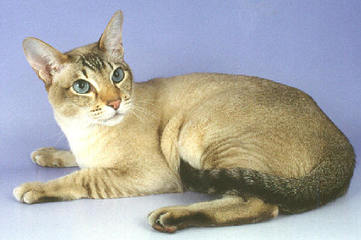
We uncover an aspect of epidermal development that signifies the establishment of pattern element identity and characterize signaling molecules and pathways associated with pattern establishment.
#German ticked tabby skin#
Here, we apply single-cell gene expression analysis to fetal cat skin to investigate the developmental, molecular, and genomic basis of pattern establishment.

However, tabby markings are apparent in developing hair follicles 17, indicating that the establishment of the color patterns must occur at or before hair follicle development. In previous studies of domestic cats, we showed that Endothelin 3 is expressed at the base of hair follicles in tabby markings, causes a darkening of the overlying hairs by increasing the production of black−brown eumelanin relative to red−yellow pheomelanin, and therefore plays a key role in the implementation of tabby pattern 17. The archetypal tabby pattern-regularly spaced dark markings on an otherwise light background-varies considerably in both form and color, and many of those varieties are similar to some wild felid species. Thus, periodic mammalian color patterns may be conceptualized as arising from a three-stage process: (1) establishment of pattern element identity during fetal development (2) implementation of pattern morphology by paracrine signaling molecules produced within individual hair follicles and (3) maintenance of pattern element identity during hair cycling and organismal growth 17, 19.ĭomestic cats are a useful model to study color patterns due to their accessibility, the genetic and genomic infrastructure, the opportunity for genomic and histological studies of tissue samples, and the diversity of pattern types 19, 20, 21. Additionally, pattern element identity of an individual hair follicle, e.g., as giving rise to light- or dark-colored hair, is maintained throughout hair cycling and cell division, so that individual spots or stripes of hair apparent at birth enlarge proportionally during postnatal growth. By contrast, in mammalian skin and hair, melanocytes are uniformly distributed during development, and the amount and type of melanin produced are controlled later by paracrine signaling molecules within individual hair follicles 16, 17, 18.

In fish, color patterns involve direct interactions between pigment cells that are often dynamic, allowing additional pattern elements to appear during growth or regeneration 13, 14, 15. Reaction−diffusion and other mechanisms to account for periodic morphological structures have been implicated in diverse developmental processes in laboratory animals 5, 6, 7, 8, 9, 10, 11, 12, but much less is known about mammalian color patterns, largely because the most prominent examples occur in natural populations of wild equids and felids that are not suitable for genetic or experimental investigation. In mammals, markings such as cheetah spots and tiger stripes helped motivate theoretical models, such as the Turing reaction−diffusion mechanism, that have the potential to explain how periodic and stable differences in gene expression and form might arise from a uniform field of identical cells 1, 2, 3, 4.

Understanding the basis of the animal color pattern is a question of longstanding interest for developmental and evolutionary biology.


 0 kommentar(er)
0 kommentar(er)
